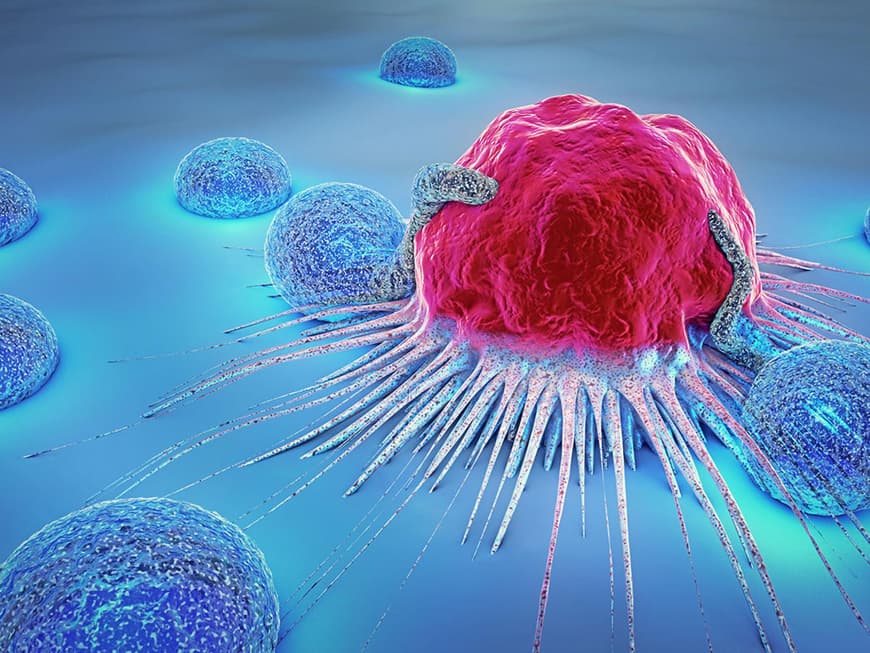Waves heat up limited areas of the tissue
Fever renders invaders harmless (see below). Tumor cells also react to this. This is why doctors have been looking for ways to treat cancer with heat for more than a century. These methods are known under the collective term "hyperthermia". If the entire body is put into a feverish state, for example through a targeted infection with bacteria, the weakened organism can be damaged. To heat only the tissue affected by the cancer instead, doctors now use micro-waves, radio waves or ultrasound. Depending on the method, the body temperature is raised to between 41 and 43 degrees. Although the heat cannot destroy tumor cells, it does make them more sensitive. This makes accompanying radiotherapy or chemotherapy more effective.
Risks and long-term consequences are not yet known
Initial results sound promising, but the procedures have not yet been tested enough. Reproducible successes have so far mainly been achieved with soft tissue sarcomas (connective tissue cancer). Risks and long-term consequences need to be researched, and the side effects of combination therapies add up. Due to the weak study situation, health insurance companies rarely cover the treatment and few doctors have used it to date. It is usually part of an alternative therapy concept. You should then find out exactly what the costs are - and what risks you bear as a patient.
Fever as a cleansing program for the immune system
Shivers of cold and waves of heat alternate through the body, chills make the muscles tremble. Anyone who has ever had real flu knows these symptoms. The immune system fights serious infections with fever. The heat kills many pathogens. This works best at temperatures of around 38.5 degrees, when the immune system's so-called killer cells are particularly active. A higher fever, on the other hand, puts a strain on the circulation and should be cooled down.
You may also be interested in this:
Vitamin B12: Overdosing can increase the risk of cancer
Prevent & cure: The breast cancer consultation
Preventing cancer - what can I do?
Sport for cancer: just as important as medicine
Early cancer detection: the health insurance fund pays for these screenings
Active against cancer: What influence do the psyche and immune system have?
Let's talk about cancer! Three bloggers share their pain, fears and hopes


